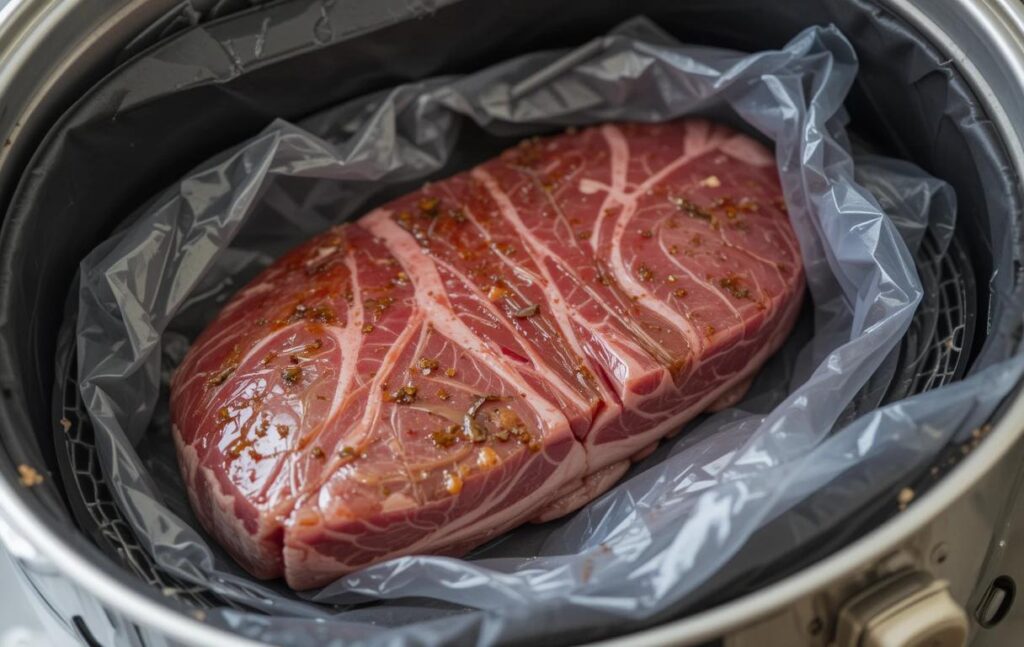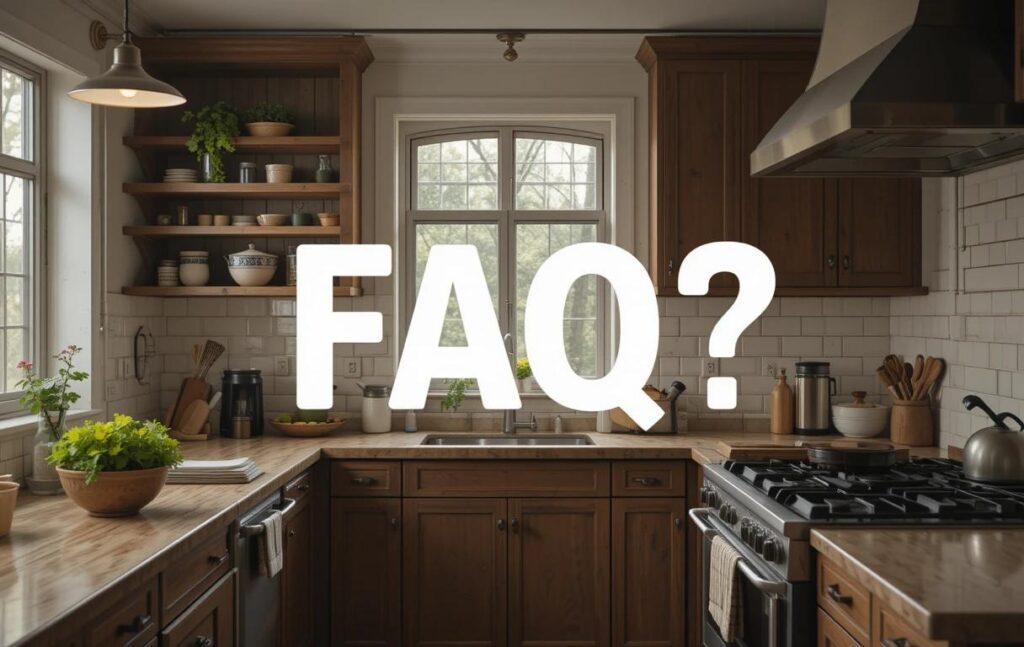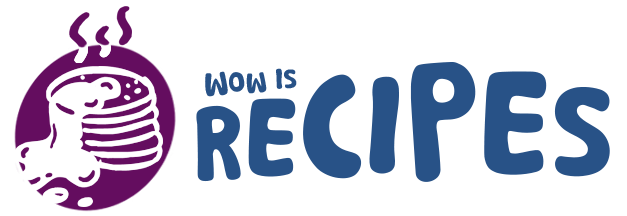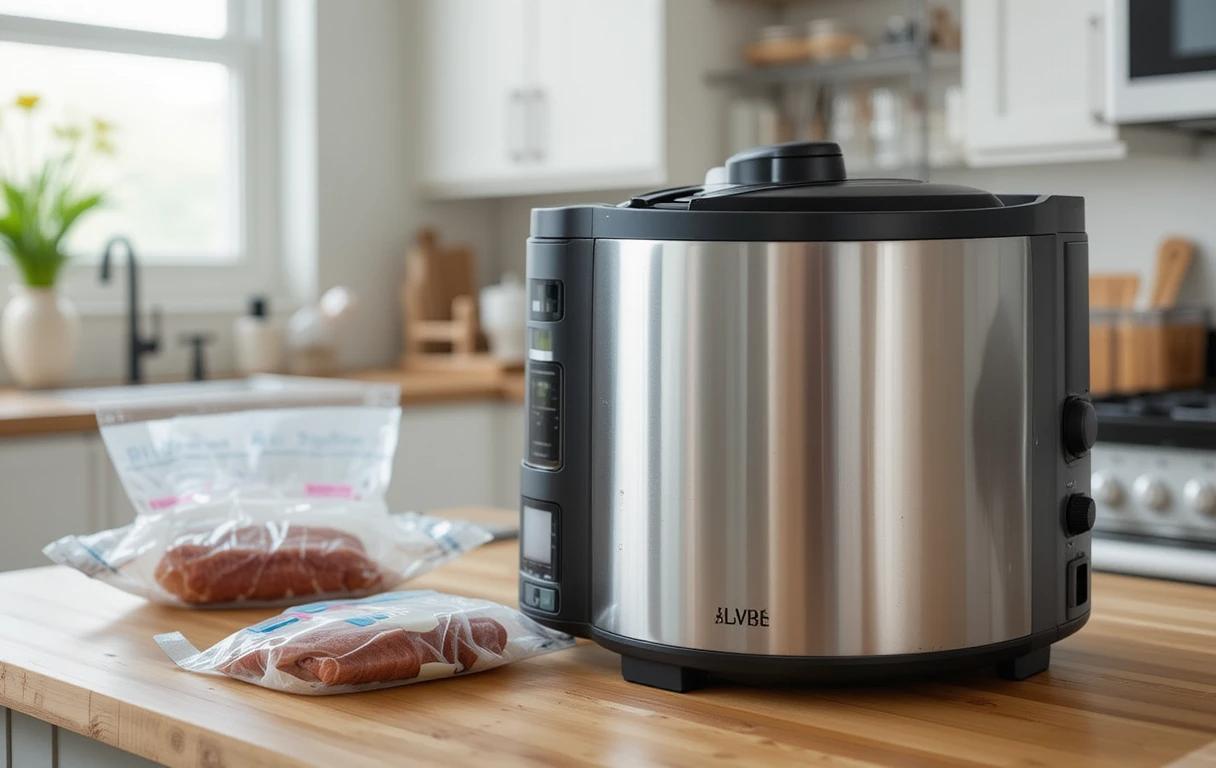What Are the Disadvantages of Sous Vide Cooking?
Sous vide cooking has become a popular method among professional chefs and home cooks alike. Known for its precise temperature control and ability to deliver consistently cooked dishes, it’s often considered a revolutionary technique. But is it perfect? Like any cooking method, sous vide has its downsides. In this article, we’ll explore the disadvantages of sous vide cooking, from equipment costs to environmental concerns, to help you decide if this method is right for your kitchen.
Key Takeaways:
- Sous vide cooking requires specialized equipment, which can be expensive.
- The process is time-consuming and may not suit everyone’s lifestyle.
- Food safety and environmental concerns need to be considered.
Read on to discover the seven most significant drawbacks of sous vide cooking.
Detailed Analysis of the Disadvantages of Sous Vide Cooking
1. High Initial Cost of Equipment
One of the primary drawbacks of sous vide cooking is the high cost of equipment. Unlike traditional cooking methods that rely on basic tools like pans and pots, sous vide requires specialized gear. At a minimum, you need a sous vide immersion circulator, a vacuum sealer, and food-grade plastic bags. Some setups also require additional items like water baths or containers designed to hold the circulator.
For beginners, these costs can quickly add up. A decent-quality immersion circulator can range from $70 to $300, while vacuum sealers and compatible bags might cost an additional $50 to $200. For home cooks who don’t cook sous vide often, the investment might not feel justified. In contrast, a frying pan or a slow cooker can serve multiple purposes at a fraction of the cost.
2. Time-Consuming Cooking Process
Sous vide cooking is celebrated for its precision, but that precision often comes at the cost of time. Many sous vide recipes require hours of cooking, even for relatively simple dishes. For example, a steak might take anywhere from one to four hours, depending on the thickness and doneness preference. While this method frees you from constantly monitoring your food, the lengthy cooking time can be a dealbreaker for those with tight schedules.
Moreover, sous vide cooking doesn’t include prep and finishing time. Even after hours of cooking, most recipes require additional steps like searing to achieve the desired texture and flavor. This makes sous vide unsuitable for last-minute meal preparations or when you’re short on time.
3. Requires Specialized Tools
To achieve the best results, sous vide cooking depends on an assortment of specialized tools. These include:
- Vacuum Sealers: Essential for sealing food in airtight bags to ensure even cooking.
- Plastic Bags: Designed to be food-safe and capable of withstanding high temperatures.
- Water Baths: Containers large enough to accommodate the immersion circulator and food bags.
While workarounds like using zip-top bags and pots exist, they are often less efficient and may compromise the quality of your results. The reliance on these tools makes sous vide less accessible compared to traditional methods like grilling or baking, which rely on everyday kitchen items.
Environmental Concerns with Plastic Use
Another significant disadvantage is the environmental impact. Sous vide cooking frequently involves single-use plastic bags, contributing to waste. While reusable silicone bags are available, they are not as widely adopted due to their higher upfront cost and limited availability. If you’re environmentally conscious, this dependency on disposable plastic can be a dealbreaker.
More Drawbacks of Sous Vide Cooking

4. Limited Browning and Texture
Sous vide cooking excels in maintaining precise temperatures and achieving perfectly cooked food. However, this precision comes with a drawback: limited browning and texture. When food is cooked in a water bath, it doesn’t undergo the Maillard reaction—the chemical process responsible for the golden-brown crust and rich flavor in foods like steaks and roasted vegetables.
To compensate, most recipes require an additional step, such as searing meat in a hot skillet or broiling it in the oven. While this can enhance texture and flavor, it adds time and complexity to the process. For some, the need for this extra step defeats the purpose of sous vide’s convenience and precision.
Why This Matters: Foods like steak, chicken, or fish often depend on a flavorful crust to complete the dish. Without proper finishing, sous vide meals can taste underwhelming.
5. Potential Food Safety Risks
While sous vide cooking is known for its precision, it’s not without food safety risks. When food is cooked at lower temperatures for extended periods, bacteria like Clostridium botulinum (responsible for botulism) can thrive if proper precautions aren’t taken.
Key safety issues include:
- Temperature Control: Cooking at temperatures below 130°F (54.4°C) for too long can allow harmful bacteria to grow.
- Storage Concerns: Sous vide food often needs to be refrigerated or frozen immediately after cooking to prevent spoilage.
- Vacuum Sealing Risks: Improper sealing techniques can trap bacteria, especially if air pockets are left inside the bag.
For inexperienced cooks, the risk of mishandling sous vide food can lead to health hazards. While following food safety guidelines can mitigate these risks, the margin for error is smaller compared to traditional cooking methods.
Pro Tip: Always use a thermometer to verify internal temperatures and avoid low-temperature sous vide for high-risk foods.
Risk of Over-Reliance on Sous Vide Precision
Another subtle disadvantage is the tendency to become overly reliant on sous vide’s precision. For example, cooks may focus solely on exact temperature settings and lose sight of the broader culinary skills needed to create complex, multi-dimensional dishes.
Cooking is as much an art as it is a science. By depending heavily on sous vide machines, you may miss out on developing techniques like sautéing, roasting, or grilling—skills that build a cook’s intuition and versatility.
Food for Thought: While sous vide delivers consistent results, it doesn’t teach improvisation, which is often key to mastering traditional cooking.
Other Limitations of Sous Vide Cooking
6. Lack of Traditional Cooking Experience
Sous vide cooking is often described as a “set it and forget it” method. While this convenience is a selling point, it also removes much of the hands-on experience that traditional cooking offers. For those who enjoy the tactile and sensory aspects of cooking—stirring a bubbling sauce, flipping a sizzling steak, or monitoring a simmering stew—sous vide may feel overly mechanical or detached.
Additionally, sous vide doesn’t encourage spontaneous creativity in the kitchen. Traditional methods often involve tasting, adjusting seasoning, and experimenting, whereas sous vide relies on precise measurements and pre-set times. This lack of engagement can make cooking feel more like a technical task than an art.
Why This Matters: For hobbyist chefs and food enthusiasts, the creative process is as rewarding as the final product. Sous vide may not fulfill this desire for hands-on cooking.
7. Not Ideal for All Foods
While sous vide is versatile, it doesn’t work well for every type of food. Certain ingredients are better suited to traditional cooking methods, either due to their texture, flavor profile, or cooking needs. Foods that don’t adapt well to sous vide include:
- Pasta and Rice: These staples require boiling water for proper hydration and cooking, making sous vide impractical.
- Crispy Vegetables: While sous vide can cook vegetables like carrots or broccoli evenly, it often results in a softer texture rather than the desired crispness.
- Delicate Seafood: Thin, flaky fish like tilapia may fall apart or become overly soft when cooked sous vide.
Moreover, for foods that need quick, high-heat cooking—such as stir-fries or deep-fried dishes—sous vide is simply not the right tool.
Pro Tip: Before investing in sous vide equipment, evaluate the types of meals you cook most often. If sous vide isn’t compatible with your regular diet, it might not be worth the cost.
FAQs About the Disadvantages of Sous Vide Cooking

Can Sous Vide Cause Health Problems?
While sous vide cooking is generally safe, mishandling food during the vacuum sealing or cooking process can lead to issues like bacterial contamination. It’s important to cook at safe temperatures (above 130°F) and follow storage guidelines to prevent risks like botulism.
Is Sous Vide Cooking Worth the Investment?
Sous vide is worth the investment for those who value precision, consistency, and high-quality results. However, for casual cooks or those with limited time, the costs and learning curve may outweigh the benefits.
Does Sous Vide Waste a Lot of Plastic?
Yes, single-use plastic bags are a concern for eco-conscious cooks. Alternatives like reusable silicone bags can help reduce waste but come at a higher cost.
Why Does Sous Vide Take So Long?
Sous vide relies on gentle, low-temperature cooking to ensure even results. This process can take hours, but it’s the trade-off for precision and tenderness.
Can You Overcook Food with Sous Vide?
While sous vide reduces the risk of overcooking, leaving food in the water bath for too long can affect texture, making it mushy.
What Foods Should Not Be Cooked Sous Vide?
Foods like pasta, rice, and thin fish are better suited to traditional cooking methods due to their specific texture and preparation requirements.
Summary and Conclusion
Conclusion
Sous vide cooking offers precision, convenience, and consistent results, making it a favorite among professional chefs and home cooks alike. However, as we’ve explored in this article, it’s not without its drawbacks. From the high cost of equipment to environmental concerns and limitations with certain foods, sous vide may not be the perfect fit for everyone.
For those who value hands-on cooking and creative improvisation, sous vide can feel overly mechanical and detached. Similarly, the reliance on specialized tools and long cooking times can be impractical for busy lifestyles. Lastly, food safety risks and the environmental impact of plastic use require careful consideration.
When Is Sous Vide a Good Choice?
Sous vide is ideal if you:
- Frequently cook proteins like steak, chicken, or fish.
- Want to achieve consistent results without overcooking.
- Don’t mind the upfront cost and extra prep steps like searing.
When Should You Skip Sous Vide?
Sous vide may not be worth it if you:
- Prefer quicker cooking methods like grilling or stir-frying.
- Focus on cooking foods like pasta, rice, or delicate vegetables.
- Enjoy the tactile, creative experience of traditional cooking.
Final Thoughts
While sous vide cooking has its disadvantages, it ultimately depends on your cooking style, dietary preferences, and willingness to invest in the necessary equipment. By understanding these limitations, you can make an informed decision about whether sous vide deserves a place in your kitchen.
What Is Sous Vide?
Related Recipes
- “Tuna Tomato Sauce Pasta Recipe“: A tomato-based recipe showcasing another way to use tomatoes.
- “Baked Chicken Fettuccine Alfredo with Broccoli“: Another comforting dish that can be complemented with tomato-based sauces.
Ingredient-Focused Content
- “Lions Mane Mushroom Recipe“: Suggest using a tomato gravy as a flavorful addition for plant-based dishes.
Cooking Techniques and Enhancements
- “Mango Habanero Salsa“: Explore complementary uses of sauces and gravies for flavor diversity.
Storage and Reuse Tips
- “Sous Vide Recipes“: Recommend tomato gravy as a sauce for sous vide-cooked meats or vegetables.
- “Ocean Spray Cranberry Sauce Recipe“: Guide readers on making and storing sauces, including tomato gravy.

